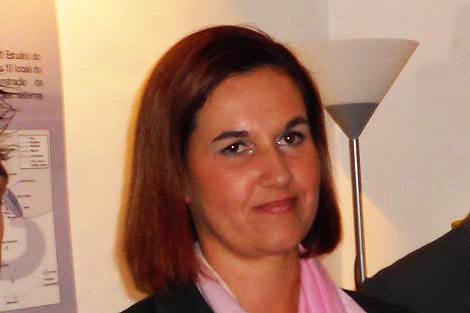 Paderne castle is made of mud and, after more than 800 years, its crumbling tower needs urgent repairs - budgeted at €90,000.
Paderne castle is made of mud and, after more than 800 years, its crumbling tower needs urgent repairs - budgeted at €90,000.
On July 29th, 2016 a protocol for the 'Recovery, Restoration and Conservation of the Albarrã tower of Paderne Castle' was signed to save the tower before it crumbles away.
The original building material for the tower and castle walls was ‘taipa militar’ a compressed mud and gravel mix which was plastered and painted. For the technically minded, the 'taipa,' or mud, that Paderne is made from varies between 30-42% aggregate limestone, 12-17% fine cohesive materials and 41-58% of sand.
The erosion of the castle tower is such that an intervention is needed now, or the focal point of the castle may well deteriorate beyond the point of repair. Damage to 'taipa' walls occurs from driving rain, rising damp through crumbling stone foundations, bird and animal damage and human damage.
This is one of the most emblematic ‘taipa’ castles of the Iberian Peninsula and therefore this restoration is an opportunity to enhance a unique heritage structure that needs a quick intervention," said Alexandra Gonçalves, (pictured below) the Algarve’s cultural director.
Other castles in the south of the country made in part from 'taipa militar' include Alcácer do Sal, Juromenha, Moura, Paderne e Silves.
Paderne castle lies 100 metres above sea level and protected the Ribeira Quarteira below and nearby fertile valleys in a strategic area between the coast and the hills between Loulé and Silves castles.
The structure was built in the twelfth century during the Almohad rule, a period in which the Arabs held a strong defensive system to deter the expansionist policy of the Christians.
The first written reference for the castle dates to 1189 and the archaeological work that has been carried out shows human occupation dating to the mid-twelfth century.
In the year 1506 the population transferred from inside the castle to the current parish of Paderne when a new church, Nossa Senhora da Esperança, was ready.
Gonçalves added that, "only the tower is to be restored, because this is the element that stands out most in the landscape."
Parts of the castle wall already have been repaired using traditional ‘taipa’ construction techniques which show the new sections against the old.
This money is coming from CRESC 2020, Albufeira council and the Millenium BCP Foundation and the work should take about eight months and will be overseen by specialist architect Manuel López Vicente.
‘Discovering the Castle of Paderne’ will run throughout August with the castle opening its gates from 10h00 to 18h00 offering an excellent opportunity to look over the inside of one of the most interesting monuments in the region.

Alexandra Gonçalves, Direcção Regional de Cultura do Algarve






















